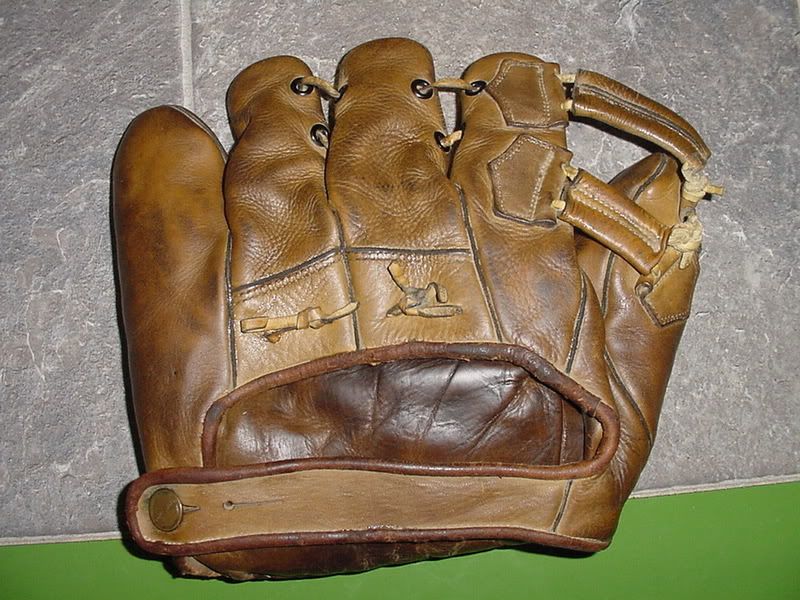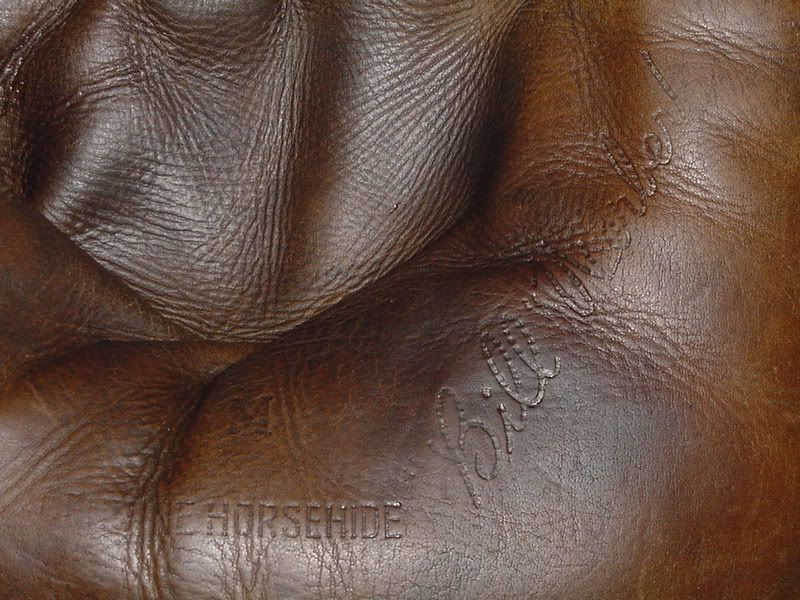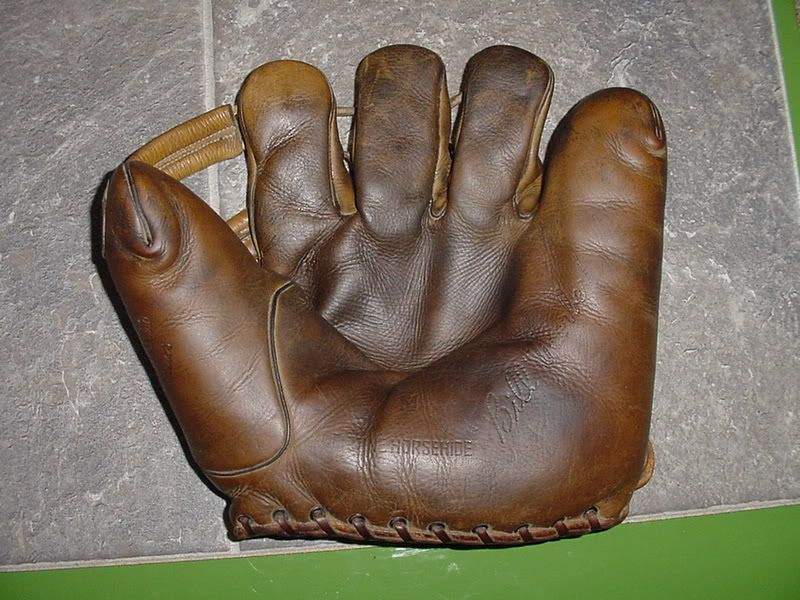The Ken-Wel 1927 laced finger patent specifically placed the lacing grommets at the back of the finger stalls. Rawlings countered this design by applying for a patent on their own laced finger glove in 1927. It took Rawlings four full years to get their patent approved. Coming on the heels of the Ken-Wel design, Rawlings met resistance that their design was different enough from the ken-Wel glove patent since both had the same goal of closing the fingers more easily around a caught ball. The Rawlings patent of 1931 is shown below and the most obvious change is the placement of the lacing in the front portion of the finger stalls.

Rawlings inventor William Whitley argued that the front placement of the finger lacing was an improvement in two ways. First, a caught ball would not cause the lacing to cramp or pinch the fingers and second, the parallel placement of the lacing holes allowed the finger stalls to slide sideways, improving dexterity. The patent examiners ultimately agreed and the patent was issued. The Rawling's design never really took hold and there are few example of it today. Below is one however and it shows the lacing pattern very well. This is a glove I would be interested in purchasing or trading for a nice zipper heel glove if a forum member/visitor reads this post.








